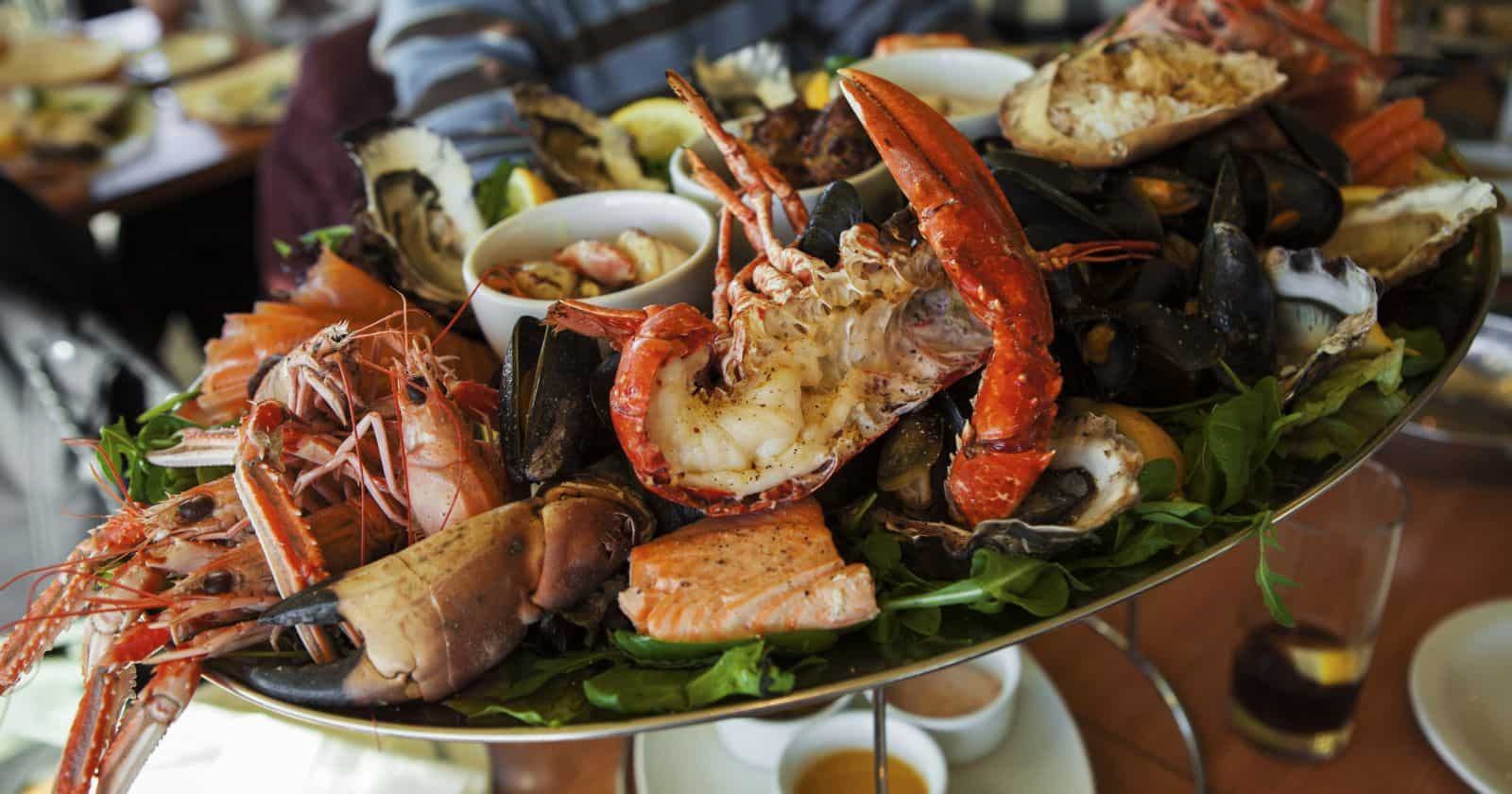Lobster does not taste like fish, though some cheaper varieties may have a fishier taste. Its flavor can be best described as similar to crab or shrimp, but with a sweeter and more satisfying touch. Choosing a reputable lobster supplier is crucial to ensure fresh, non-fishy lobster meat.
Get ready to dive into the world of lobster flavors! Discover the truth about whether lobster tastes like fish, explore ways to enhance its natural taste, and unravel the secret to selecting the perfect lobster for your indulgent feast. No more second-guessing – let’s find out why lobster is a luxurious delight worth savoring.
The Truth About Lobster’s Flavor: Debunking the Myth of Fishiness
The myth that lobster tastes fishy is easily debunked by multiple reliable sources. In fact, lobster has a distinct flavor that is sweet, tender, and succulent. It does not have a strong, fishy taste like crab, which is often mistakenly associated with lobster. Many people describe the flavor of lobster as buttery and creamy, further emphasizing its uniqueness.
When it comes to cooking lobster, the most traditional and common method is to prepare it with butter. This not only enhances the taste but also contributes to a melt-in-the-mouth experience. The flavor of lobster is rich and satisfying, making it a delectable choice for seafood enthusiasts.
Interestingly, the type of shell does not impact the flavor of lobster. However, it does determine the amount of meat you can enjoy. So whether you have a hard shell or a soft shell lobster, rest assured that the flavor remains consistent.
It’s important to note that freezing, thawing, and refreezing can affect the texture of lobster meat, making it mushy and less flavorful. Therefore, it is best to consume lobster when it is fresh for the optimal tasting experience.
If you ever come across lobster ice cream, which is a local delicacy in some places, don’t shy away from it. Despite its unusual combination, lobster ice cream offers a creamy and buttery taste, where the flavor of lobster truly shines when you bite into a chunk of meat.
Exploring Lobster’s Unique Taste: Comparing It to Crab and Shrimp
Lobster has a unique taste that sets it apart from other seafood, such as crab and shrimp. It is often compared to these two popular choices, but there are distinct differences that make lobster stand out.
Firstly, lobster shares similarities in texture and taste with shrimp, monkfish, and crabs. These seafood options have a similar texture, which can be described as firm yet smooth, and lobster falls into this category.
When it comes to flavor, lobster has a sweet and tender meat, similar to crab but with its own distinct qualities. Lobster is slightly sweeter, cleaner, and lighter in taste compared to crab. It also has a better balance of flavors than prawns or shrimp, with a combination of sweet, tangy, and salty notes.
The taste of lobster can also vary depending on how it’s cooked and the seasonings and ingredients used. When baked, fried, or grilled, lobster can take on a smokier flavor, adding another layer to its taste profile.
One unique aspect of lobster is that it retains the freshness of the sea, which gives it hints of saltiness and tanginess, enhancing its overall taste experience. Unlike fish, lobster does not have a fishy flavor. Instead, it has a subtle sweet taste that is pleasing to many palates.
To enhance the taste of lobster, it is often served with butter, which not only adds richness but also helps to keep the meat moist. This combination further enhances the already delicious flavor of lobster.
Sourcing the Freshest Lobster: Ensuring Quality and Flavor
When it comes to sourcing the freshest lobster, there are several key factors to consider to ensure both quality and flavor. Here’s what you need to know:
- Choose a reputable supplier: Opt for a supplier that specializes in live Atlantic lobster and has a solid reputation for quality and freshness. This way, you can have confidence in the source of your lobster. Buying from a well-known and trusted supplier is essential in ensuring that you get the best possible lobster.
- Buy directly from the fisherman or a small-scale fishmonger: For the freshest lobster, it’s best to purchase directly from the fisherman or a small-scale fishmonger. By bypassing middlemen, you can ensure that you’re getting lobster that has been recently caught and hasn’t been sitting around for long.
- Look for live lobster options: Live lobster is often considered the highest quality and freshest option. Seek out a supplier that offers live lobster delivery, as this guarantees that the lobster is still alive and incredibly fresh. Live lobster is preferred by many because it ensures the lobster is at its peak freshness when it reaches your doorstep.
- Consider Maine lobster: Maine lobster is renowned for its sweet and succulent taste, boasting a distinctive and rich flavor. If taste is a priority for you, choosing a supplier that specializes in Maine lobster can help ensure that you’re getting the best-tasting lobster possible. This variety of lobster is highly sought after for its exceptional flavor profile.
- Check for sustainability: It’s important to support sustainable fishing practices and protect the environment. When sourcing lobster, consider choosing a supplier that prioritizes sustainability and ethical fishing practices. This way, you can enjoy your lobster guilt-free, knowing that you’re supporting responsible fishing.
- Enhance the flavor with seasonings: To further enhance the flavor of your lobster, consider using seasonings and ingredients like butter, garlic, lemon, onion powder, paprika, sherry, and white wine. These additions can complement the natural sweetness of the lobster and elevate the overall taste experience.
- Consider prepared dishes: Not everyone is comfortable cooking live lobster at home. If that’s the case for you, opt for a supplier that offers prepared lobster dishes. This convenient option allows you to enjoy lobster without the hassle of cooking it yourself. These prepared dishes are expertly crafted to maintain the lobster’s freshness, flavor, and texture, giving you a restaurant-quality experience in the comfort of your own home.
Elevating the Taste: Classic Cooking Methods to Perfect Your Lobster
When it comes to cooking lobster, there are several classic methods that can take your dish to the next level. These techniques not only ensure that your lobster is cooked to perfection, but also elevate its taste and flavor. Let’s explore these cooking methods in more detail:
- Boiling: Boiling is perhaps the most common way to cook lobster. To achieve the best results, bring a large pot of salted water to a boil. Then, carefully add the lobster and let it cook until the shell turns bright red and the meat is cooked through. This method ensures that the lobster retains its natural flavors and textures.
- Steaming: Steaming is another popular method for cooking lobster. Simply place the lobster in a steamer basket over a pot of boiling water. Steam the lobster until the shell turns bright red and the meat is cooked through. Steaming helps to preserve the delicate flavors of the lobster and ensures tender, juicy meat.
- Grilling: Grilling lobster tails is a fantastic way to impart a smoky and charred flavor to the meat. Start by brushing the tails with butter or oil to prevent them from sticking to the grill. Then, grill the tails until the meat is cooked through and the shell becomes nicely charred. This method adds a unique twist to the traditional lobster dish.
- Baking: Baking lobster tails in the oven is another great option. Brush the tails with butter or oil, and then bake them until the meat is cooked through. Baking allows the meat to stay moist and tender, while infusing it with the rich flavors of butter or oil.
- Broiling: Broiling involves cooking the lobster under a broiler to achieve a charred shell and perfectly cooked meat. Simply place the lobster under the broiler until the shell becomes charred and the meat is cooked through. This method brings out the natural sweetness of the lobster and gives it a delicious caramelized flavor.
To further enhance the taste of your lobster, there are a few additional techniques you can try. One popular method is to serve lobster with melted butter, as it adds richness and depth to the dish. In addition, you can experiment with various seasonings such as lemon, herbs, or even white wine to elevate the flavor profile of the lobster.
Butter: The Key Ingredient for Melt-in-Your-Mouth Lobster Goodness
Butter is a crucial ingredient in many lobster recipes, as it enhances both the flavor and texture of the meat. It adds richness and creaminess that makes the lobster melt-in-your-mouth delicious. Here are some ways butter is used in lobster dishes:
- Garlic Butter Lobster Tails: Melted butter and garlic are brushed over lobster tails before grilling or broiling. The butter adds moisture and richness, while the garlic infuses a delightful flavor.
- Butter Seared Lobster Tails: Lobster tails are seared in a mixture of butter and oil to prevent the butter from burning. This method results in tender and succulent lobster meat.
- Lobster Tails with Garlic Butter: Melted butter, garlic, and spices are brushed over lobster tails before baking them in the oven. The butter keeps the meat moist and imparts a heavenly garlic flavor.
- Lobster Tails with Lemon Butter: Melted butter and lemon juice are brushed over lobster tails before grilling or broiling. The combination of butter and tangy lemon elevates the taste of the lobster.
- Lobster Mac and Cheese: Chopped lobster meat is added to a creamy mac and cheese sauce made with butter, milk, and cheese. The butter contributes to the luxurious and velvety texture of the dish.
Eliminating Fishy Undertones: Tips to Ensure a Clean Taste in Your Lobster Dish
If you want to enjoy a clean and flavorful lobster dish without any fishy undertones, here are some tips to keep in mind:
- Choose fresh lobster: Fresh lobster is key to avoiding any fishy taste. Make sure to buy it from a reputable source and check for signs of freshness like clear eyes and a firm tail. This ensures that you are starting with high-quality lobster.
- Avoid overcooking: Overcooking lobster can ruin its texture and flavor, making it tough and rubbery. Cook the lobster until the shell turns bright red and the meat is cooked through, but be careful not to overcook it. This will help maintain its natural sweetness and prevent any undesirable fishy taste.
- Use spices and seasonings: Enhancing the flavor of lobster with spices and seasonings can help eliminate any fishy undertones. Popular choices include butter, lemon, garlic, and herbs. These additions complement the natural taste of lobster and create a delicious balance of flavors.
- Cook with butter: Butter is a classic method for cooking lobster that not only adds richness but also enhances the taste and keeps the meat moist. If preferred, you can also use other types of fat like olive oil or coconut oil for cooking lobster. These fats contribute to a clean taste while adding a unique touch to the dish.
- Pair with complementary flavors: Complementary flavors can elevate the taste of lobster and further mask any fishy undertones. Consider pairing your lobster dish with white wine, garlic, and lemon. These ingredients work harmoniously to enhance the flavor profile of the lobster. You can also explore pairing lobster with other seafood like scallops or shrimp for a flavorful seafood medley.





